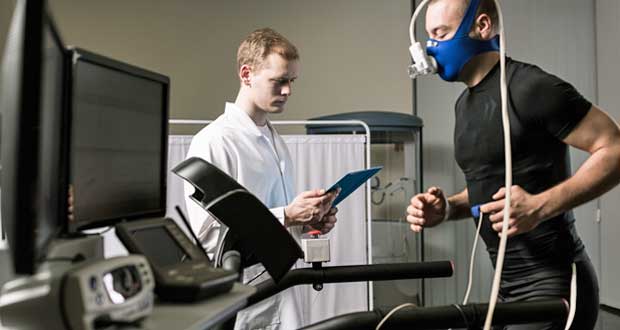VO2 max, or maximal oxygen uptake, is a common measurement linked to aerobic endurance that many athletes use to determine their overall fitness. VO2 max is the measurement of the maximum amount of oxygen that an individual can utilise during intense, or maximal exercise. It is measured as millilitres of oxygen used in one minute per kilogram of body weight (ml/kg/min). It is one factor that may help determine an athlete’s capacity to perform sustained exercise.
An athlete’s VO2 max score is generally considered by exercise physiologists as one of the best indicators of the athlete’s cardiovascular durance and aerobic endurance Theoretically, the more oxygen you can use during high-level exercise, the more adenosine triphosphate (ATP) energy you can produce in your cells. This is often the case with elite endurance athletes, who typically have very high VO2 max values.
What factors affect VO2max?
Age, fatigue, anaerobic threshold and familiarity with the rowing stroke can all affect VO2max. For example, an athlete with a high anaerobic threshold may perform better than another, despite having a lower VO2max. It’s possible that this comes into play with untrained individuals: since they lack training, they may depend more heavily on their natural anaerobic capability.
How much can I improve my VO2max?
VO2max can be improved with training, but there are limits to how much one can improve. Generally the untrained individual may be able to achieve greater improvement (up to around 20%) than the already well-trained person (perhaps only 3–5%).
Cardiovascular Fitness Calculations Based on VO2max (mL*kg-1*min-1)
| Gender | Age | Poor | Fair | Average | Good | Excellent |
|---|---|---|---|---|---|---|
| Men | < 29 | < 24.9 | 25-33.9 | 34-43.9 | 44-52.9 | > 53 |
| 30-39 | < 22.9 | 23-30.9 | 31-41.9 | 42-49.9 | > 50 | |
| 40-49 | < 19.9 | 20-26.9 | 27-38.9 | 39-44.9 | > 45 | |
| 50-59 | < 17.9 | 18-24.9 | 25-37.9 | 38-42.9 | > 43 | |
| 60-69 | < 15.9 | 16-22.9 | 23-35.9 | 36-40.9 | > 41 | |
| Women | < 29 | 23.9 | 24-30.9 | 31-38.9 | 39-48.9 | > 50 |
| 30-39 | < 19.9 | 20-27.9 | 28-36.9 | 37-44.9 | > 45 | |
| 40-49 | < 16.9 | 17-24.9 | 25-34.9 | 35-41.9 | > 42 | |
| 50-59 | < 14.9 | 15-21.9 | 22-33.9 | 34-39.9 | > 40 | |
| 60-69 | < 12.9 | 13-20.9 | 21-32.9 | 33-36.9 | > 37 |
These aerobic fitness classifications are based on relative VO2 (ml/(kg*min)) and
are taken from Essentials of Exercise Physiology, 3rd ed.
How was this tool created?
This tool is based on thousands of real data points collected by Dr. Fritz Hagerman of Ohio University. Over the years, Dr. Hagerman performed VO2max tests using gas analysis on many subjects. He also had the same subjects row a max 2000m test piece on the indoor rower. He then correlated the two tests to create the formulae used in this prediction tool.
